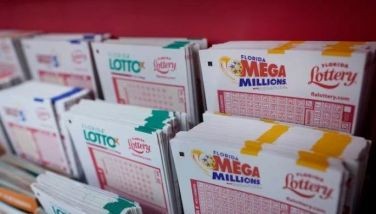Decoding the language of design
Good design” is an ambiguous term. Because when you think about it, what may be impressive and remarkable to some people may not be necessarily so to others. Perhaps there is no such thing as good or bad design. That there are no real standards by which design can be assessed; that it is just a matter of personal preference and good taste. But then again, there is no accounting for taste.
what makes for a good design?
Dieter Ram, former head designer of Braun, and considered one of the most influential industrial designers of the 20th century, offers a straightforward definition: “Good design is unobtrusive, honest, durable, innovative, useful, and has respect for the environment. Good design is as little design as possible; it is back to purity, back to simplicity.”
Sydney Gordon Russell, the late director of
Russell also explains that there are a number of factors required to make a well-designed product. “Materials should be chosen carefully, not just for economic reasons, but also from a manufacturing point of view. For instance, it is useless to make a tea strainer out of cellulose acetate when that material cannot withstand heat.
“One must also consider the production technique. Is it handcrafted or machine made? One should take into account the end-user. Who are your consumers? Coming up with a detailed outline and a list of requirements at the onset helps.”
Essentially, good planning makes a good design. Ergo, it takes a good designer to do a good job of creating a good product.
Of course, having revolutionary ideas, and translating these into a thing of beauty and function count a lot, too. In this age when everyone wants to be in the spotlight and get more than his five minutes of fame, having new, unconventional, even bizarre, ideas separate the good designer from a great one.
Impressing the Critics
However, none of these arguments — neither Ram’s nor Russell’s — hold water without the international design community’s seal of approval. Applause and good reviews somehow do not come close to being recognized by prestigious award-giving bodies. Today, the trophy is considered the all-important sign of acceptance.
But with thousands of products currently on the market, scrutinized closely by a very particular group of experts with a very exacting set of standards, what does it take to be singled out?
Clearly, designers and manufacturers of Philippine-made products know what it takes to bring home the trophy, having won numerous awards, recognitions, and citations from different international design groups — Roscoe, International Contemporary Furniture Fair, G-Mark, and the United Nations Educational Scientific and Cultural Organization (UNESCO), to name a few.
In the
Manila F.A.M.E. International is, of course, the country’s leading design show in the
Taking off from its meaning, which is to craft or create, the Katha award is given to the bi-annual show’s exhibitors who display creative excellence in the categories of product design, booth design, and promotional collateral design (print and online).
Entries are chosen by noted local and international design experts and critics, which then go through a lengthy, rigorous adjudication process. This year, the judges included Joey Yupangco, Ed Calma, Susan Joven, Cesar Gaupo, Lesty Mijares of the Foreign Buyers Association of the Philippines (FOBAP), and Australian journalist Toni Briggs.
Since the first time the award was given out, Philippine manufacturers have displayed a noticeable difference in the way they lay out their merchandise, design their booths, especially their products, which get plus points for innovation, ingenious use of materials, and functionality.
All jury members had to sort through thousands of products spread throughout 25,000 square meters of exhibition space. Definitely not an easy job considering that there were close to 500 companies, all with equally beautiful merchandise.
“Deciding on which should be nominated was enough to leave one cross-eyed, but narrowing it down to one or a couple of winners per category was even more taxing,” says Briggs who was in the country for the first time to cover the show, and was instantly astounded by the apparent creativity of the Filipinos. “I’ve never seen this kind of beautiful stuff in
Lesty Mijares, who has been doing this for years, still had a challenging time picking out the nominees and winners, “because there are a number of things to consider,” he says. “First, the product should have that unique blend of Filipino creativity and craftsmanship; and it has to exude that elusive Filipino charm with global appeal.”
After hours of trying on every nominated fashion accessory, sitting on chairs, looking closely at materials, and scrutinizing every detail, it was time for the drum roll.
Winners of the Best Product Design in the home furnishings category were The Gem by Passad and Uni Mirror by MCCA Industrial Corporation, while Atom Lamp by Papelan won for the Lumina category.
Winners in the home accessories category included Wisk by Tadeco Livelihood and
Perfect for Christmas are the Foldable Boxes of Team International, which won in the holiday decor category. What makes this item unique is that you could make them according to your own size specifications.
DA International and A. Suarez Sterling Corporation bagged the award in the fashion accessories category. The former for its Necklace Pyramid, an elegant neckpiece that combines resin and mother-of-pearl, and the latter for its Textured Play in Geometry, a set of brooches using a combination of textured and natural finished sterling silver. The Best Booth Design went to Locsin International.
The judges pointed out that these products were chosen not just for their originality, but for their marketability as well. And judging from the number of orders these products got during the fair, no one can doubt their commercial viability.
Through the years, the Katha has embodied Filipino creativity at its finest. Most of all, it shows you what good design and good taste are all about.



















